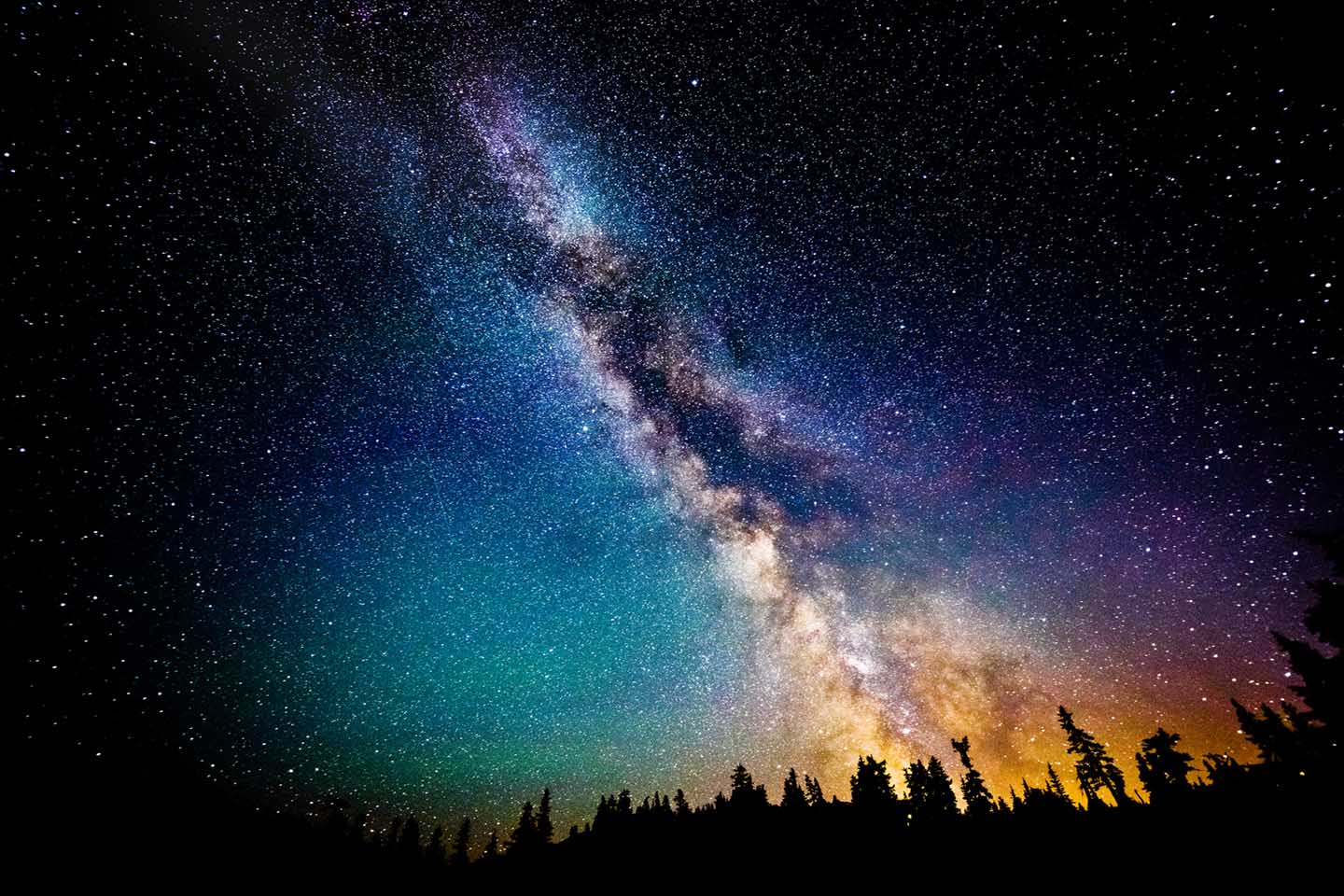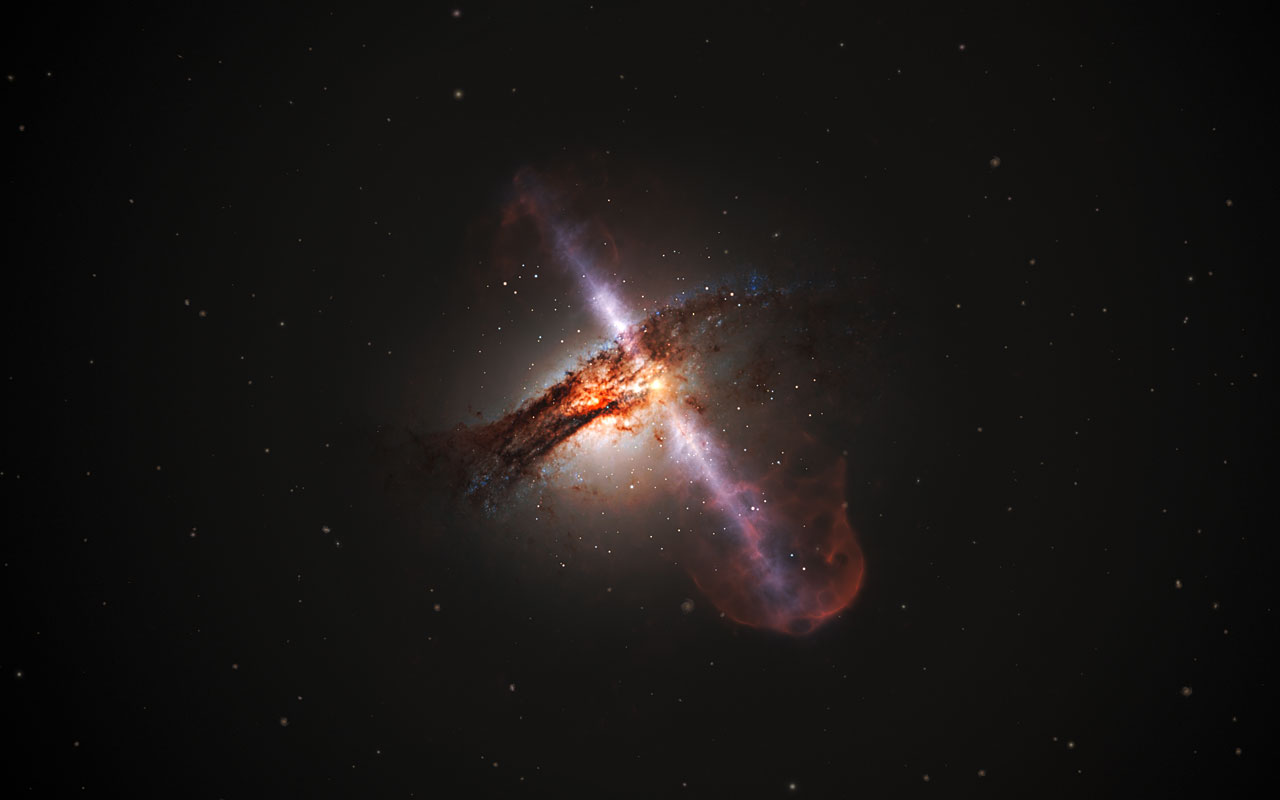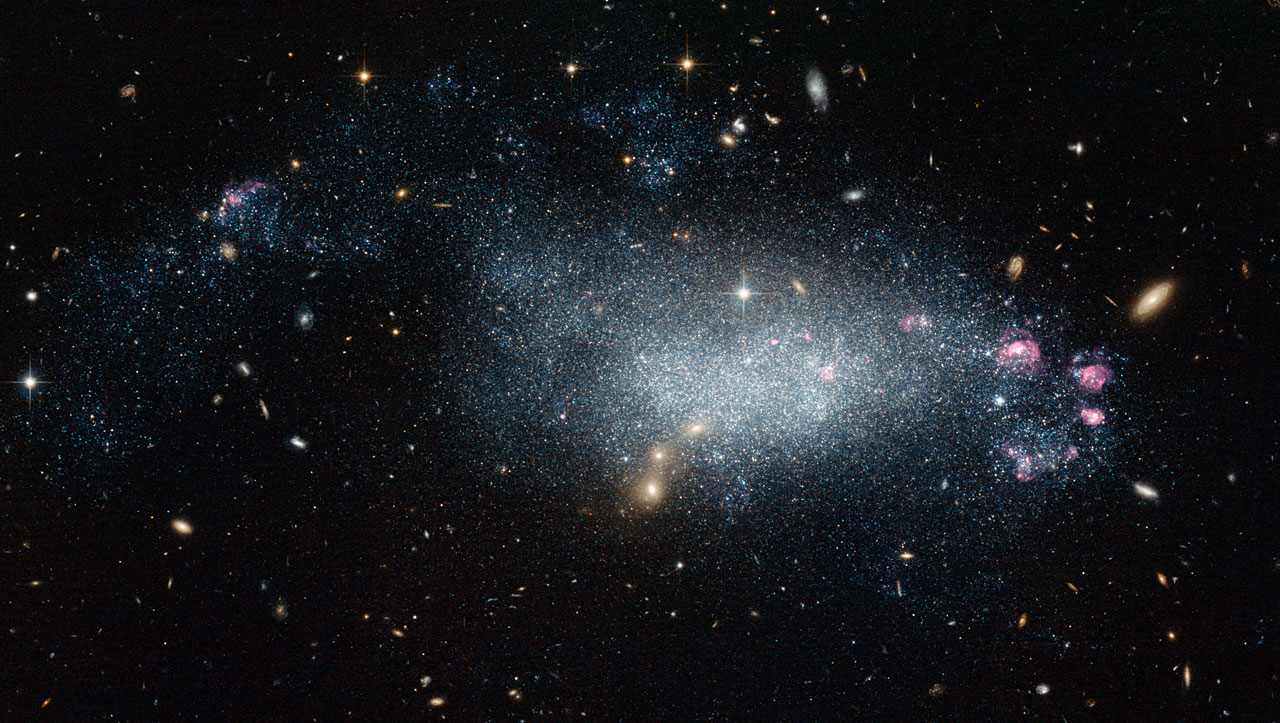
Dark matter makes up 70 percent of the universe, making it the most abundant -- as well as the most mysterious -- substance in existence. Until recently, it was also considered hypothetical, but Italian researchers claimed to have disproved all theories that rejected dark matter's existence.
Their study, which appeared in The Astrophysical Journal, tackled “galaxy rotation curves.” These rotation curves -- which refer to the manner by which a galaxy's velocity changes in respect to the distribution of mass -- present strong evidence for dark matter.
In astrophysics, celestial objects and star systems that move around the edges of classical spiral galaxies are expected to move slower than those near the galactic center because of lower amounts of luminous matter. However, the researchers observed that the velocity of celestial objects in the Milky Way and similar spiral galaxies were uniform, even for those near their borders. The matching velocities of objects with different masses clashed with the widely accepted understanding of astrophysics.
Researchers looked for a way to explain why galaxy rotation curves didn't follow astrophysical laws. They came up with dark matter, a type of substance that existed throughout the galaxy but was invisible on the electromagnetic spectrum.
The invisible matter gave celestial objects on the border of galaxies the mass they needed to match the velocity of equivalents near the center. (Related: Weird science: Did a mirror image of the universe exist after the Big Bang?)
Does dark matter really exist?
Besides resolving the issue of known galaxy rotation curves, dark matter also played a significant role in galactic formation and shaping. It acted as an invisible glue that held the parts of a galaxy together, which explained why some formations looked weird.
The concept of dark matter gained traction among researchers. However, it also had its share of detractors who doubted the existence of such a convenient and invisible substance.
In 2018, Yale University researchers reported finding a galaxy that barely had any signs of dark matter. And just like how galaxy rotation curves seemed to break astrophysical laws in the past, so did the new discovery go against the prevailing concept that every galaxy contained dark matter.
“It challenges the standard ideas of how we think galaxies work, and it shows that dark matter is real: It has its own separate existence apart from other components of galaxies,” claimed Yale researcher Pieter van Dokkum. His team reportedly found another set of dark matter-free galaxies in 2019.
Experts who didn't like dark matter used the Yale discovery to propose tweaks to the laws of gravitational theory. Their modifications would explain galaxy rotation curves and other puzzling cosmic phenomena without resorting to dark matter.
Rebuttal of theories that dismiss the need for dark matter
In response to those theorized, researchers from the International School for Advanced Studies (SISSA) examined the relationship between total acceleration and its ordinary component in 106 galaxies. Their calculations showed that earlier observations might have been inaccurate and even incorrect.
“This not only demonstrates the inexactness of the empirical relationship previously described but removes doubts on the existence of dark matter in the galaxies,” declared SISSA researcher and study author Paolo Salucci. “Furthermore, the new relationship found could provide crucial information on the understanding of the nature of this indefinite component.”
The SISSA researchers covered both spiral and non-spiral galaxies in their study. They looked up 72 examples with low surface brightness — these galaxies were at least one magnitude dimmer than the ambient night sky.
Further, they also included 34 dwarf disc galaxies. Both types of galaxies underwent analyses regarding their shape and galactic radius.
SISSA researcher Chiara Di Paolo remarked that their counterparts at Case Western Reserve University doubted the existence of dark matter following the 2018 Yale study. He said that his team's findings dispelled such allegations about the invisible glue of the universe.
Sources include:
Please contact us for more information.





















